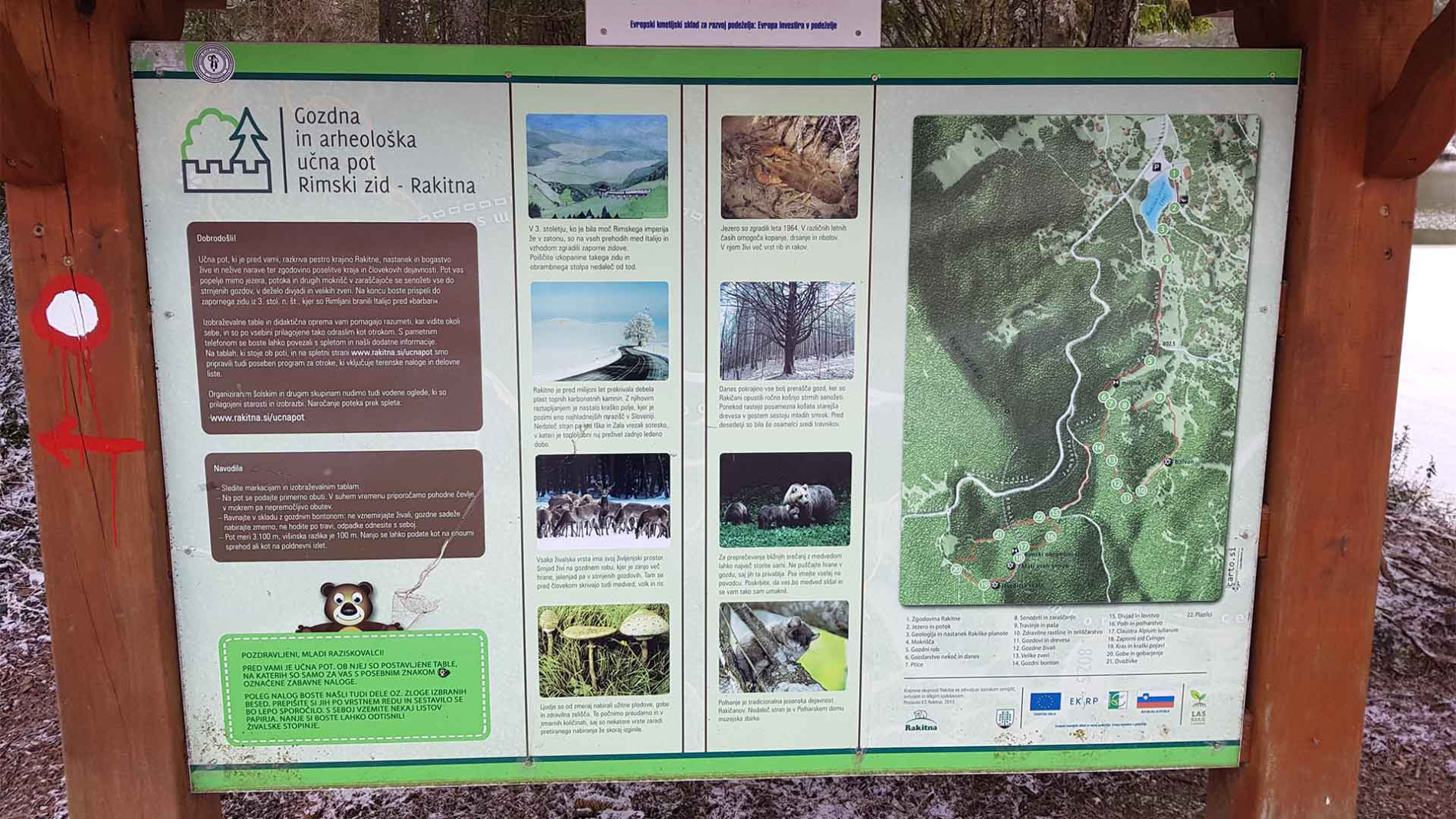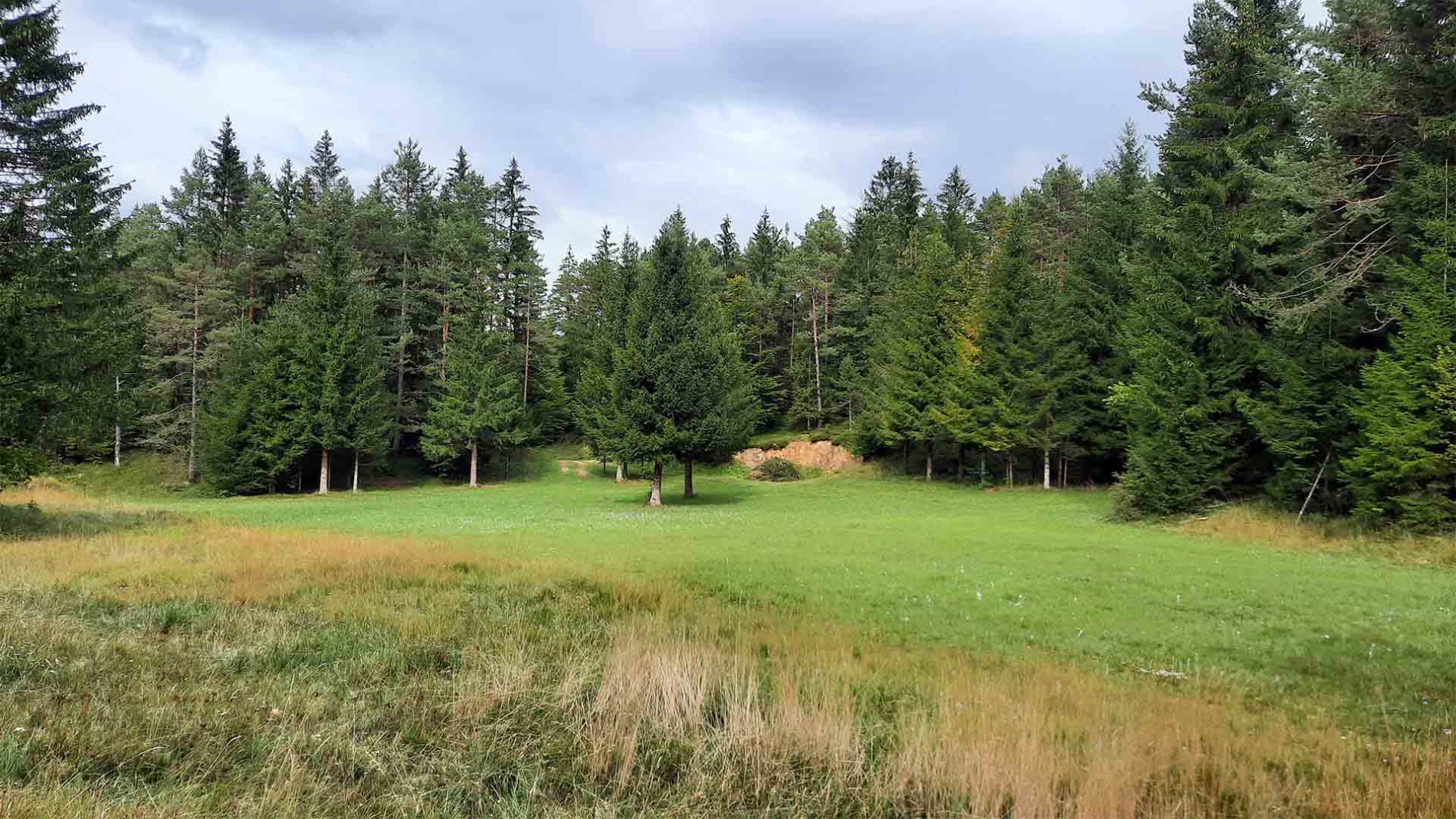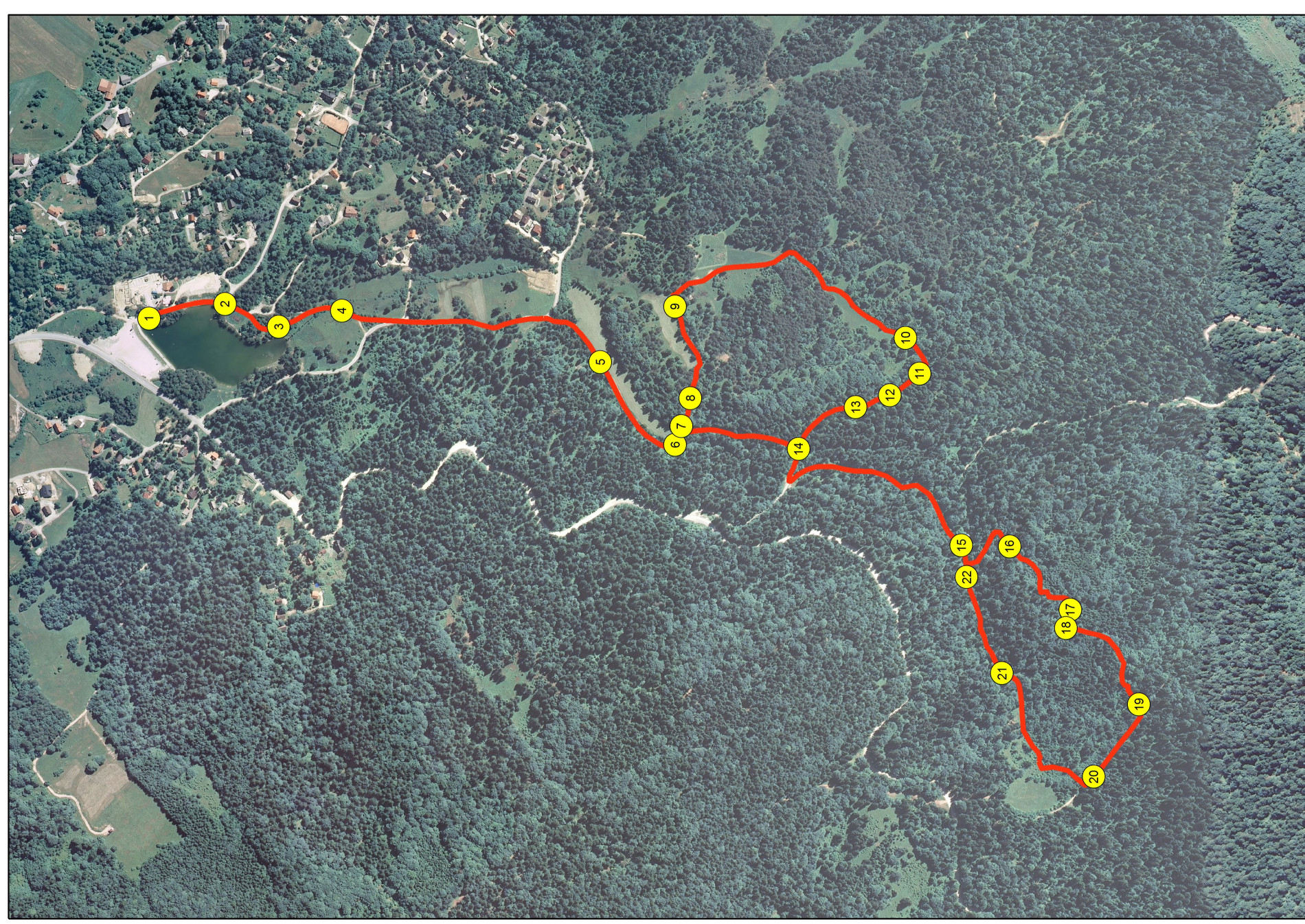The Roman Wall Forest and Archaeological Learning Trail begins by the lake opposite the Hotel Rakitna, where there is a large board providing basic information about the trail and map showing the locations of a further 22 information boards. (Each board also includes a variety of tasks and puzzles for children to solve.)
Also at the start of the trail is a noted curiosity of Rakitna: a 64-metre-long replica of a ship’s mast that was made locally for the Slovene-owned barque Beechdale in the late nineteenth century and transported by road from here to Trieste.
The learning trail coincides with a marked hiking trail, so along its length you will see, as well as wooden signposts marked “Učna pot” (Learning Trail), the distinctive Knafelc blazes or waymarks (a red circle with a white dot). Information boards are frequent. If their content interests you, you will certainly need rather more than the approximately one hour it would otherwise take to complete the trail without stops. You will also see several wooden boards with the names of trees – a good opportunity to learn about the wide variety of tree species in the area.
For the most part, the trail follows good cart tracks, with just a brief section along an asphalt road, across already quite overgrown meadows. Only at one point does it become slightly steeper, when it leads towards the former location of the Roman wall the trail is named after: the Claustra Alpium Iuliarum or “Schengen system of the third century” that protected the Roman road that ran through this area. The rest of the trail is mainly flat or rises and falls gently.
Starting point
Rakitna (27 km from the centre of Ljubljana). There is a macadam car park by the lake (up to 2 hours: 1 euro; whole day: 2 euros). From the car park, walk towards the hotel, opposite which there is a large information board with a description and map of the Roman Wall Forest and Archaeological Learning Trail (Gozdna in arheološka učna pot Rimski zid) and a hiking waymark indicating the direction to take.
Time of year
Suitable at all times of year. In winter trails can be icy in places, especially after snow, so it is a good idea to use crampons and hiking poles. Waterproof footwear is recommended after rain and in the colder months of the year, since the trail is wet and muddy in places.











